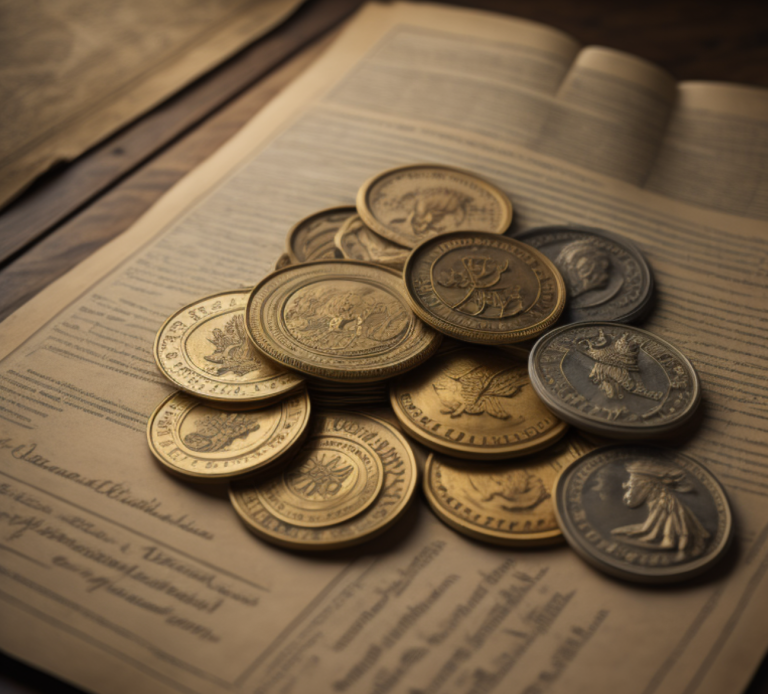
Was Joseph Smith
wealthy?
Red Brick Store
January 5, 1842
Joseph Smith opened the store on 5 January 1842. The entire building, including the store, appears to have stayed in the possession of Emma Smith and her children. It was eventually sold by the Smith family in 1890 and torn down. The store was later rebuilt and today it belongs to the Community of Christ Church and functions as a tourist gift shop in Nauvoo.
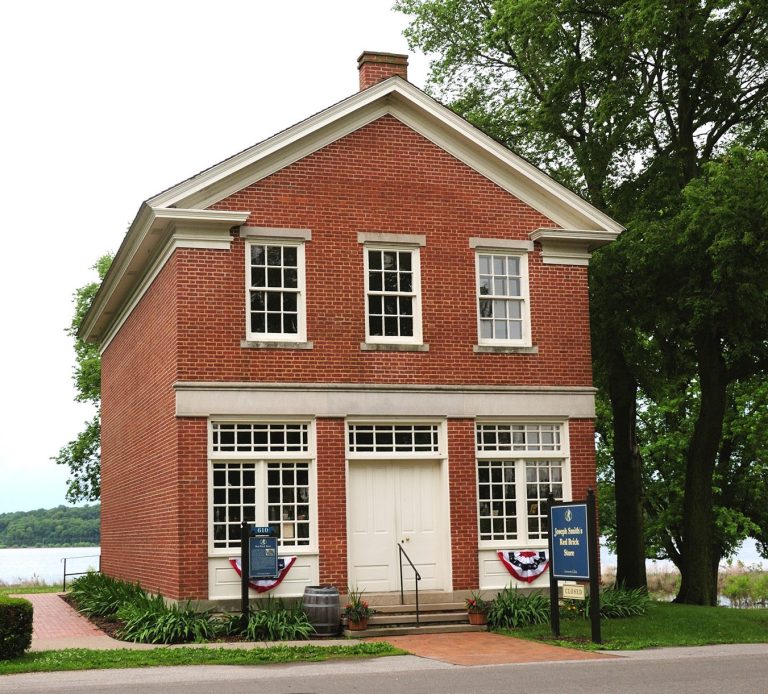
On the Joseph Smith Papers website we can read the following:
"There is little documentation for the business aspects of the store aside from two daybooks and some loose financial records. The daybooks record daily transactions made from January 1842 to July 1844. Notations in the second daybook indicate that clerks were also keeping a ledger, but it is apparently no longer extant. Unlike JS’s Ohio stores, the Nauvoo store has no surviving invoices and few surviving accounts or bills of goods. Extant records do not name the store or the company responsible for running it. Many Nauvoo residents referred to the store as “General Smith’s store,” “President Joseph Smith’s store,” “the brick store,” or some combination of these."
[Joseph Smith Papers, Introduction to Joseph Smith's Nauvoo Store]
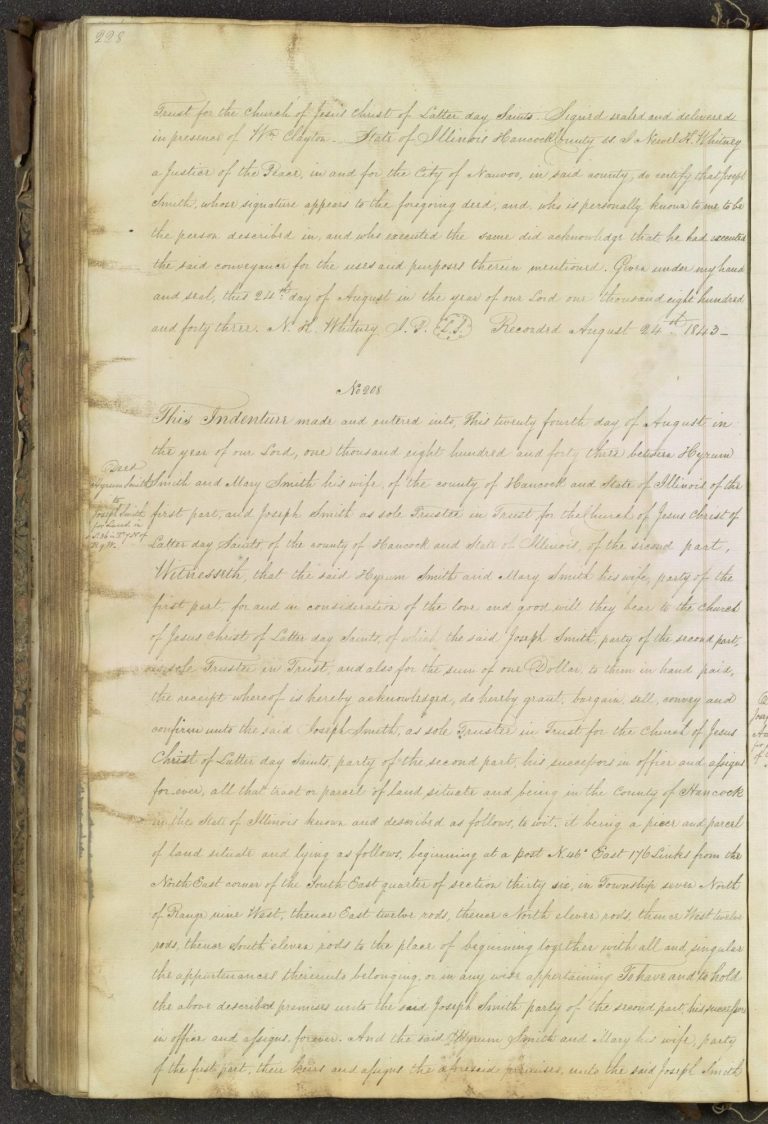
Land Speculation
Nauvoo land was purchased by Joseph Smith for $2 per acre then sold the land for higher amounts averaging $500 per acre (sometimes significantly more). Joseph Smith sold over 25 lots for these amounts.
$500 back then is the equivalent of over $17,000 today.
Examples of buying:
On 4 January 1842 First Presidency members Joseph Smith, Sidney Rigdon, and Hyrum Smith signed a bond transferring land in Nauvoo, Illinois, to JS as trustee-in-trust for the church. Knowing that they would sell the land for higher, they signed themselves as liable for $27,300. Joseph Smith purchased this land for the amount of one dollar. [Bond]
On June 4, 1843, Joseph Smith bought land from James Dunn at the sum of one dollar. [Deed]
On August 24, 1843, Joseph Smith bought land from Hyrum Smith at the sum of one dollar. [Deed]
Examples of selling:
On July 15, 1841, Joseph Smith sold land to Joseph Bates Noble at the sum of $5,000. [Deed]
April 8, 1842, Joseph Smith sold land to Wilford Woodruff at the sum of $2,000. [Deed]
On August 9, 1843, Joseph Smith sold land to Joseph Knight, Sr. at the sum of $200. [Deed]
Minimum & Maximum
Land Recommendations
21 October, 1839
<21> Monday 21st. High council met purs[ua]nt to adjoumnt [adjournment]. & voted that Presid[e]nt Joseph Smith Jn go as a delegate to Washington; and that if he went he should have a recmmnd [recommend], from the Council. Voted that James Mulholland be clerk, to attend wh for the land contracts when needed by Prest Smith: That Joseph Smith Jn be treasures [treasurer] of said church; & James Mulholland Sub Treasurer. Voted that H[enry] G Sherwood, prize, exhibit, contract & sell town lots in Nauvoo, when needed , & present his doings to Prests. Joseph & Hyr[u]m Smith for th[e]ir app[r]oval, & that $300 be the standard price of lots. (I E) none less than $200 nor more than $800.
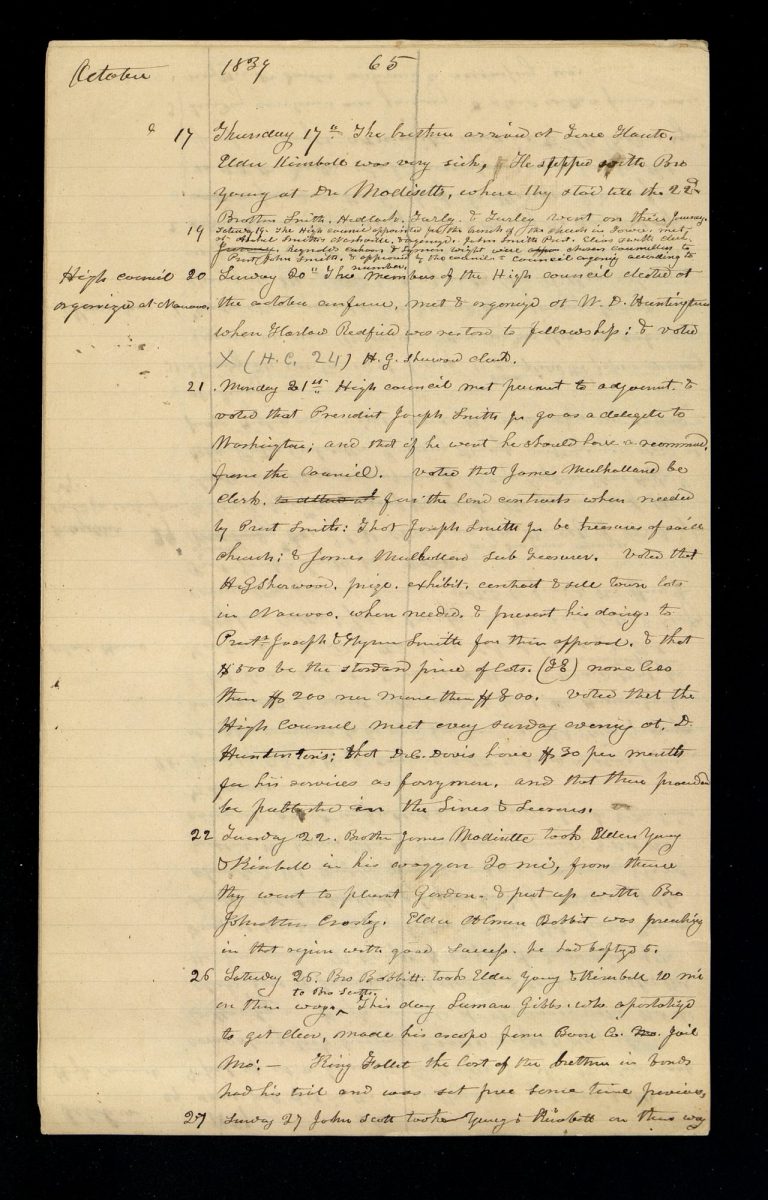
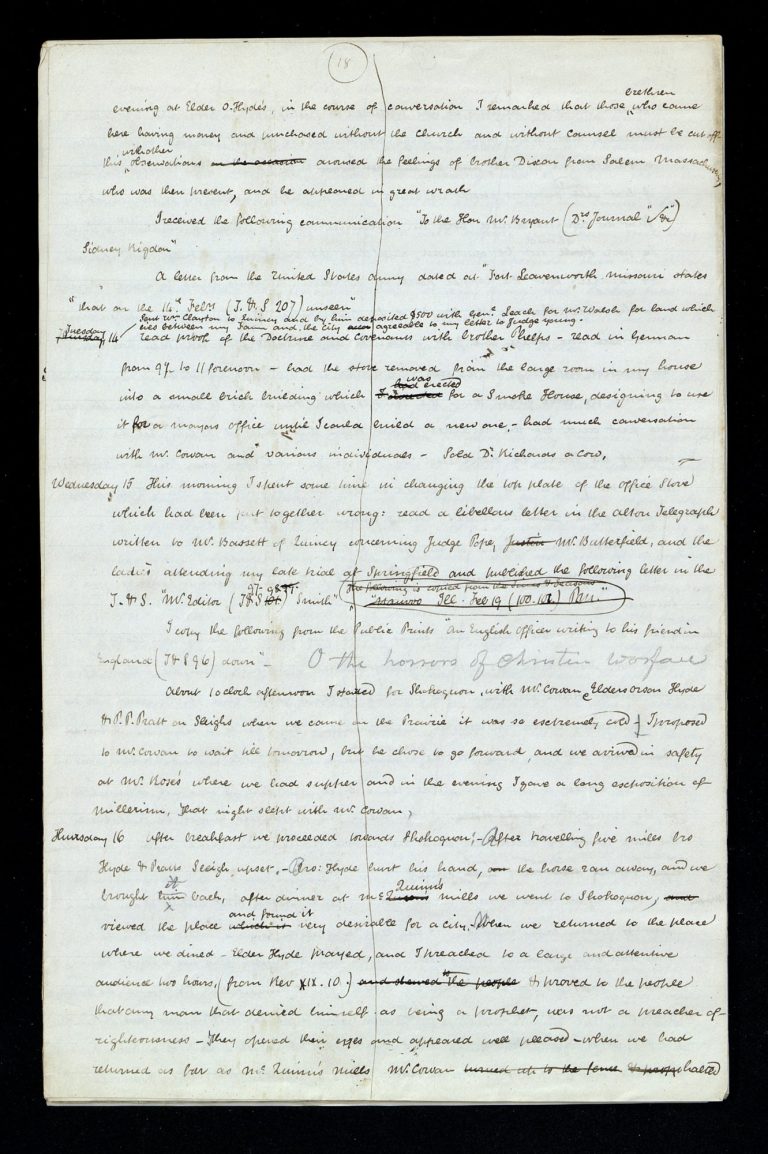
Threatened
for Buying Land
History Draft
13 February 1843
I spent the evening at Elder O. Hyde’s, in the course of conversation I remarked that those <brethren> who came here having money and purchased without the Church and without counsel must be cut off— this <with other> observations on the occasion aroused the feelings of brother Dixon from Salem Massachusetts, who was then present,
and he appeared in great wrath
Land Speculation
Nauvoo Expositor,
June 7, 1844
“We consider the gathering in hasted, and by sacrifice, to be contrary to the will of God; …it has been taught by Joseph Smith and others for the purpose of enabling them to sell property at most exorbitant prices, …to gull the saints the better on their arrival at Nauvoo, by buying the lands in the vicinity and selling again to them at tenfold advance. We consider it a deception practiced upon the saints.”
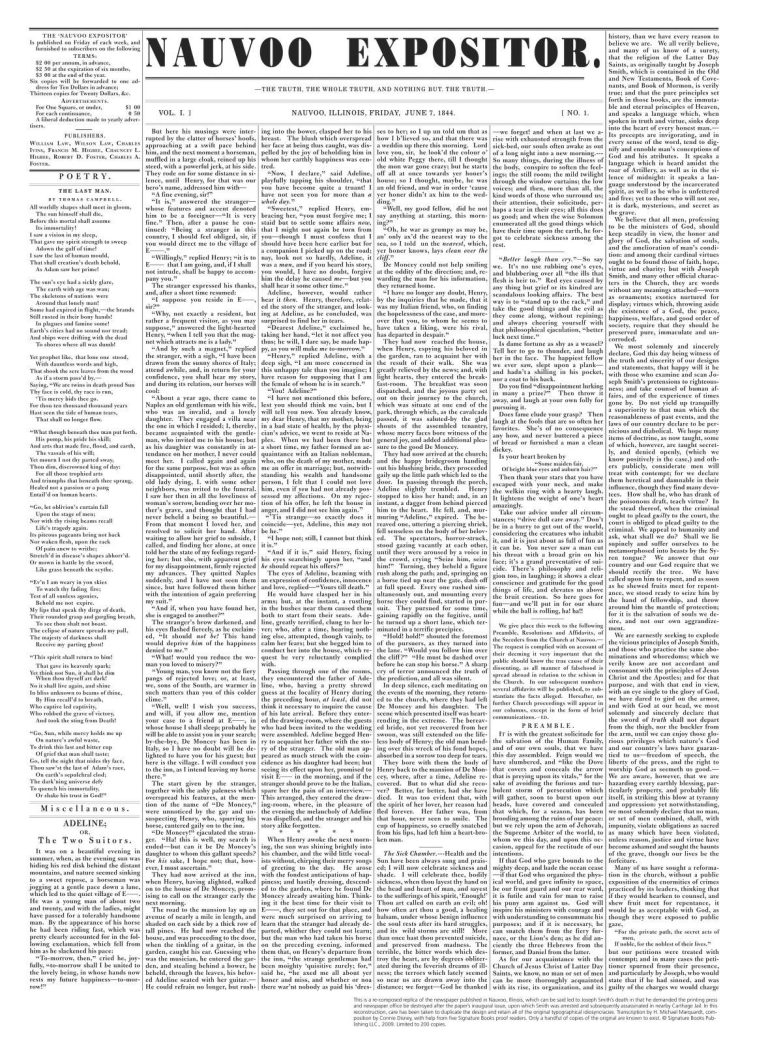
Bankruptcy in 1842
Joseph Smith cleared over $73,000 in debt by filing for bankruptcy in 1842 (his brothers Hyrum and Samuel, along with other LDS dignitaries took advantage of a brief window where Congress enacted a lenient bankruptcy law only to rescind it months later when $440 million in liabilities in the country were wiped clean for $44 million in assets). Joseph’s $73k debt would be the equivalent of $2.5 million dollars.
"...His debts totalling $73,066.38 during the spring of 1842" [Oaks, page 745]
5 His list of debts totaled $73,066.38; the invoice of his properties totaled approximately $20,000 in money and notes receivable, plus inventoried real and personal property with no estimated value recited" [Oaks, page 752]
More Debt
By Joseph’s own account, he owed approximately $70,000 again by the time he was killed just 2 years later in 1844 (over $1.84 million in 2010 dollars).

Monopoly on Liquor
12 December 1843
The Council also passed "An ordinance for the health and convenience of travelers and other persons."
Ordinance on the Personal Sale of Liquors.
Section 1. Be it ordained by the City Council of Nauvoo, that the Mayor of the city be and is hereby authorized to sell or give spirits of any quantity as he in his wisdom shall judge to be for the health and comfort, or convenience of such travelers or other persons as shall visit his house from time to time.
Passed December 12, 1843.
Joseph Smith, Mayor.
Monopoly on
Buying/Selling Land
The Nauvoo Neighbor,
20 December 1843
"To Emigrants and Latter-Day Saints Generally: I feel it my duty to say … that there is in the hands of the trustee in trust, a large quantity of lands, both in the city and adjoining townships in this county, which is for sale, some of which belongs to the Church and is designed for the benefit of the poor, and also to liquidate debts owing to the Church, for which the trustee in trust is responsible. Some, also, is land which has been consecrated for the building of the Temple and the Nauvoo House. If the brethern who move in here and want an inheritance, will buy their lands of the trustee in trust, they will thereby benefit the poor, the Temple, and the Nauvoo House, and even then only will be doing that which is their duty, and which I know, by considerable experience, will be vastly for their benefit and satisfaction in days to come. Let all the brethern, therefore, whey they move into Nauvoo, consult President Joseph Smith, the trustee in trust, and purchase their lands of him; and I am bold to say that God will bless them. …We hold ourselves ready at any time to wait upon the brethern and show them the lands … and can be found any day, either at President Joseph Smith’s bar-room, or the Temple Recorder’s office at the Temple."


$50,000 in city property
Brigham Young, Conference Address,
7 Oct. 1866
Brigham Young claimed that Emma owned $50,000 in "city property" when they finished settling the assets with Emma (which is the equivalent to $1.7 million dollars today). This apparently referred to the Hugh White purchase which Joseph had deeded to her before his death.
Nauvoo
Steamboat
September 1840
In September 1840, Joseph Smith and others attended a public auction in Quincy, Illinois. They purchased a steamboat called "Des Moines" from Captain Robert E. Lee, who represented the United States government. The steamboat was purchased 100% on credit for the amount of $4,866 and it was renamed "Nauvoo." A few months after the steamboat began its operations, it was damaged and the mans for paying off the debt was gone.

After this, the U.S. government began court proceedings to get its money. A default judgment for $5,000 was entered against the owners in June of 1842 — a large sum at the time and what would be over $175,000 today. Joseph Smith did not appear in court. Joseph Smith had filed bankruptcy earlier and perhaps thought that it would cover his obligations. The government claimed Joseph Smith's bankruptcy application should have been opposed because of alleged fraud involving land conveyances as was represented above. No agreement had been finalized by the time Joseph Smith was killed in June of 1844.
Charles. B. Street and Marvin B. Street purchased the majority interest in the steamboat on 17 February 1841. They signed a promissory note for the amount of $3,133.62, payable in goods and merchandise, due 1 June 1841. The Streets made at least one payment on June 22, 1841 for the amount of $1,025 but the remainder was left unpaid. Years later in October 1844, the Streets filed a plea accusing Joseph Smith and his partners of selling them the steamboat "with the intent to cheat and defraud" because they had represented the boat as "free from all incumbrances" and "in good credit and repute" [Amended Pleas, circa 30 October 1844]. The suit continued until May 1846, when the case was dismissed. Apparently an agreement had been reached between the parties.
[Introduction to JS et al. v. C. B. Street and M. B. Street]

Maid of Iowa
Steamboat
October 1842
The Maid of Iowa was built by Dan Jones for just over $4,000 (pg 321] and Joseph purchased it fully in 1844 [pg 334]. Many of the workers on the steamboat were charged the majority of their paychecks from Joseph back as tithing, which allowed him to run it with very cheap labor [pg. 329].
[Donald L. Enders, The Steamboat Maid of Iowa: Mormon Mistress of the Mississippi]
Homestead House
April 1839
The Homestead House was the first home where Joseph and Emma lived in Nauvoo, Illinois.


Nauvoo House
1841
Construction for the Nauvoo House began in 1842. Through revelation, Joseph Smith instructed certain men to invest in the building of his home
The Mansion House
31 August 1843
The Smith's moved into the Mansion House on August 31, 1843. The house was built in a horse-shoe shape (except square) and functioned as a hotel. In the 1890s the hotel wing of the building began to deteriorate and it was removed. The remains of the additional wing, including the cellar, can still be seen today.

Video Summary
This is a video summary of some of the sources referenced above.
© Copyright. All rights reserved.
We need your consent to load the translations
We use a third-party service to translate the website content that may collect data about your activity. Please review the details in the privacy policy and accept the service to view the translations.